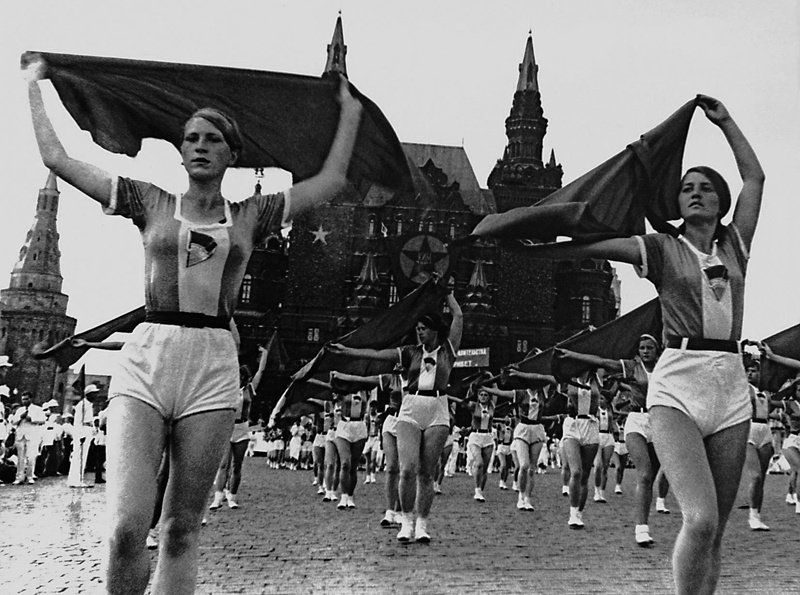Автор: не указан
Г. Бурэйл из Балтимора, который недавно привез в Советский Союз пять «самых тяжелых локомотивов в Европе» для перевозки грузов в Днепропетровск, уже бывал в России 33 года назад, когда собирал локомотивы для царя Николая II. Бурэйл — инженер компании Baldwin Locomotive Works.
«То, что я видел среди русского населения тогда, в 1899 году, и то, что я вижу сейчас, вынуждает меня поверить в то, что революция — лучшее, что могло случиться с подавляющим большинством русского народа», — заявил американец. Бурэйл говорит, что, повидав жизнь и понаблюдав за разными нациями, он никогда не встречал людей столь же миролюбивых и добрых, как русские.
«Вы никогда не увидите драки в Советском Союзе; не столкнетесь с проблемами на улицах, — заявил он. — Сегодня в советских городах многолюдно, и горожане вынуждены мириться со связанными с этим неудобствами, но при этом они держатся людей».
Бурэйл прибыл в Ленинград на шведском теплоходе «Белмория» в октябре прошлого года с пятью локомотивами типа 2-10-2, пройдя через один из самых сильных за многие годы штормов в Атлантике. Локомотивы Болдуина, как и более тяжелые аналоги производства американской компании Locomotive Co., были привязаны к носу «Белмории».
«Мы попали в 13-дневный шторм. Если бы не капитан, у нас были бы проблемы. Уильям Дрейпер и я (Дрейпер вез локомотивы для американской компании «Локомотив Ко») смотрели, как море омывает наши локомотивы. Мы понимали, что если лопнут найтовы, если один локомотив двинется, перевернется весь груз и за ним, вероятно, и сам корабль». Но штыри выдержали, и через 21 день в море корабль со своим драгоценным грузом пришвартовался в Ленинграде.
Американские локомотивы, привезенные Дрейпером, — относятся к типу 2-10-4, современные и оснащенные вспомогательными двигателями. Грузовые локомотивы — «самые тяжелые в Европе». Вместимость их тендеров составляет 44 тонны. Американский локомотив сможет перевозить до 8 000 кубометров грузов.
<…>
H, G. Burail, of Baltimore, who brought five of the «heaviest locomotives in Europe" to the Soviet Union recently lor use in hauling freight at Dniepropelrovsk, was in Russia 33 years ago, assembling locomotives for Tsar Nicholas 11. Burail is travelling engineer for the Baldwin Locomotive Works.
«What I saw of the Russian masses when I was here in 1899 and what I see of them now makes me believe that the revolution was the best thing could have happened to the vast majority of the Russian people," the American declared Burail said that in his journeying 3 over the Lace of the earth, his life among oil races and alt nations, he has never encountered a people as peace-loving and kindly as Russians.
«You never see brawling in the Soviet Union; you never see trouble on streets," he declared. «Soviet cities are overcrowded today and the citizens must put up with all kinds of inconveniences, but they keep good-lured withal.»
Burail arrived in Leningrad on the Swedish Motorship «Belmoria" in October of last year with five locomotives of the 2-10-2 type, after passing through one of the worst storms in years on the Atlantic. The Baldwin locomotives, as well as live slightly heavier ones from the American Locomotive Co., were lashed lo the bows of the «Belmoria.’’
'‘We ran into a 13-day storm. If hadn't had a smart captain, we’d have been in trouble. William Draper and I (Draper was bringing over the locomotives for the American Locomotive Co) used to look at the seas washing our locomotives. We knew if the lashings broke, if one locomotive slipped, the entire load might go over, probably turning the ship turtle.» But the lashings held, and the ship, after 21 days at sea, docked at Leningrad with its precious load.
The American locomotives brought by Draper are the 2-10-4 type, of new design, entirely modern, mechanically tired and equipped with auxiliary engines, Freight locomotives, they are «the heaviest in Europe." The water capacity of their tenders is 44,000 kilograms, coal capacity 2b,000 kilograms. An American locomotive will haul 8,000 metric tons on a 91 grade.
The engine of one of the Baldwin locomotives in working order, that is, with tire and water, weighs iaii.boo kilograms and the tender, In working order, 122.000 kilograms. The truclive capacity of a Baldwin locomotive is 25,000 kilograms, the auxiliary engine adding 6,00 kilograms, Tho Baldwin, like the American', is a Baldwin locomotive fired by a mechanical stoker.
Burail, in describing his Baldwin, said; «The Baldwin is fired by a mechanical stoker, having an exhaust steam injector placing water at a very high temperature in the boiler at no cost to the boiler, as the steam operating the injector is exhaust steam from the main cylinder.»
The ten locomotives, after being assembled and put in operation at Dnepropetrovsk, have been approved by A. Bogdanov’, head of the commission which purchased them. The best udarnik engineers in the Soviet Union have been catted into service to operate the new locomotives. Both Draper and Burail spoke in the highest terms of the engineering skill of Soviet engineers.



